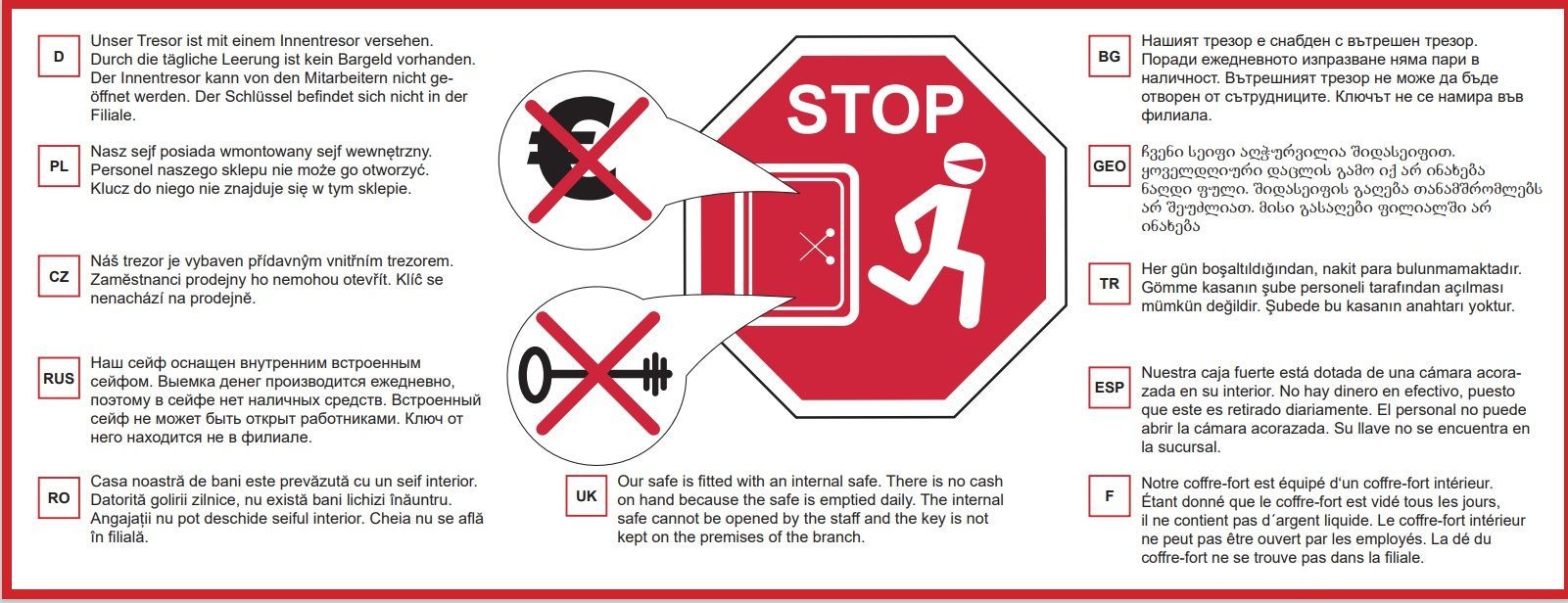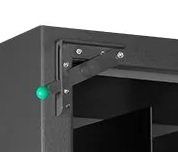
Accident protection on the safe !
Since I took part in the employers' liability insurance association course for safety officers in 1998, we have placed great emphasis on accident prevention in the workplace.
Especially in the facilities with safes.
Safes are necessary to secure values appropriately, but they are also a focus of accidents in daily handling.
We have therefore taken a number of safety measures to make handling safer.
1. Unser Sicherheitshinweis für die Filiale, siehe Anhang.
Unser Tresor ist mit einem Innentresor versehen. Der Innentresor kann von den Mitarbeitern nicht geöffnet werden. Der Schlüssel befindet sich nicht in der Filiale.
1. our security advice for the branch, See appendix.
Our safe is equipped with an internal safe. The inside safe cannot be opened by staff. The key is not in the branch.


________________________________________________________________________________________________________________________________________
2. The safe door with opening limiter for retrofitting to existing safes

Due to its stability against attacks, the safe door has a corresponding weight which, when pulled open by the operator, sets a corresponding mass in motion and this can then lead to injuries if the safe door is not guided by the operator.
Mass x acceleration = force.
We have this force under control by installing a door limiter. The door limiter is variably adjustable and only releases the previously defined opening radius.
________________________________________________________________________________________________________________________________________
3. The safe door with clamping protection for retrofitting to the existing safe






Closing the safe door is the biggest accident risk in some countries. Trapped fingers are among the most common accidents.
Because of its stability against attacks, the safe door has a corresponding weight, which sets a corresponding mass in motion when the safe door is closed by the operator, and this can then lead to injuries if the safe door is not guided by the operator.
We have minimised this risk of injury by installing a pinch guard.
We have provided you with the explanation in our button ""Function anti-trap device".
Clamp protection Mounting on the safe
https://hidrive.ionos.com/share/4mv5daynd4
________________________________________________________________________________________________________________________________________
4. Die Regalboden mit Belastungsangabe - The shelf with load specification
Safes usually have a shelf as interior equipment. This should be provided with a maximum load specification. The lack of this information gives the impression that a safe can of course withstand all requirements and then collapses like a house of cards when the shelves are overloaded.
In this case, the employee is injured by falling shelves and stored containers.
As you can see in the picture, the shelves are labelled with the maximum load limit.
This way, the employee has to check whether the container to be stored can be stored here.
The maximum weight can be as much as 50 kg for a standard shelf.
These values can of course be increased by using heavy-duty shelves if coin money is to be stored.

Sollten Sie Fragen zu dem Thema "Sicherer Umgang mit Tresoren" haben, so rufen Sie uns an oder schreiben Sie uns.
If you have any questions on the subject of "Safe handling of safes", please call or write to us.